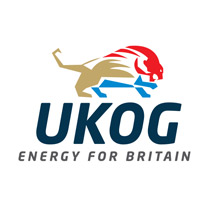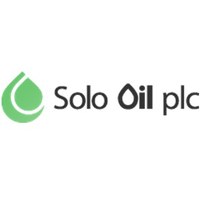Stephen Sanderson, UKOG’s Executive Chairman, commented: “The Arreton Main oil discovery and the adjacent Arreton Prospects more than triples the Company’s net recoverable conventional oil resource base. The additional prospects and leads to the west adds further valuable upside. The PEDL 331 Licence is thus a highly significant and material addition to our portfolio and will be a key part of the Company’s growth plans.
We are well advanced in our plans to drill a vertical pilot and horizontal appraisal of the Arreton-2 oil discovery. We are confident that, since independently derived drilling costs are relatively modest, the economic viability of the project is robust even at reduced oil prices. We will also be looking to employ new and innovative limestone reservoir stimulation techniques to deliver maximum rate and recovery to further boost economic viability, without massive hydraulic fracturing.
I must stress that whilst the planned Arreton site is immediately adjacent to existing brownfield developments, UKOG is committed to developing these assets with due sensitivity to the surrounding beauty of the locale and its rural way of life.”
UK Oil & Gas Investments PLC (LSE AIM/ISDX:UKOG) has told DirectorsTalk that a volumetric analysis carried out by Xodus Group Ltd calculates that the historic Arreton-2 well, now interpreted to be an undeveloped oil discovery, and the adjacent low-risk Arreton North and South Prospects contain an aggregate gross Best Estimate Oil in Place of 219 million barrels within Purbeck, Portland and Inferior Oolite limestone reservoirs. The Arreton Main discovery and Arreton Prospects lie within a 200 square km 14th Round licence offered to the Company by the Oil and Gas Authority, in which the Company has a 65% working interest.
OIP is the total estimated quantity of oil in the ground before any extraction or production and is not to be construed as Recoverable Resources or Reserves.
The Executive Summary of the report detailing Xodus’ analysis is available on the Company’s websitehttp://www.ukogplc.com/page.php?pID=110
Arreton-2 well
The Arreton-2 well, drilled in 1974 by British Gas, penetrated the large Arreton Main anticlinal structure and unexpectedly found strong oil shows in the Upper Jurassic Portland, and Inferior Oolite reservoir sections, although well testing was not successful at the time. A recent petrophysical analysis of the Arreton-2 electric logs by Nutech Energy Alliance (“Nutech”) has calculated a total oil pay of 78 feet within the Portland section, and suggests that this well can be regarded as an oil discovery based on analogous reservoirs which are known to be productive. A further 127 feet of total oil pay is also calculated in limestones within the underlying Oolite reservoir formations.
Summary of Recoverable Oil Resources
Xodus estimate that the Arreton Main structure contains aggregate P50 Net recoverable volume of 10.2 million barrels (“MMbbl”), and state that these volumes can be classified as “Contingent Resources” under PRMS reporting standards. The resources are an aggregate of two separate oil columns, one within conventional Purbeck and Portland limestone reservoirs and the deepest within a conventional Inferior Oolite limestone reservoir.
The two low-risk undrilled adjacent look-alike Arreton Prospects are calculated to contain an aggregate P50 Net Prospective Resources of 6.8 MMbbl, solely within the Portland reservoir unit.
The Licence
As previously announced, the OGA offered UKOG (65% interest) and its partners, Solo Oil (30% interest) and Angus Energy (5% interest), the Licence on 17 December 2015. The Licence will be designated Petroleum Exploration and Development Licence 331 (“PEDL331”). UKOG and its partners are finalising necessary documentation with the OGA and the PEDL331 Licence start date is planned for April 2016. The first exploration period of the Licence will last for 5 years. Further details of the Licence can be found on the OGA website www.oga.gsi.gov.uk.
Xodus Volumetric and Recoverable Resources Analysis
The analysis comprised a detailed review of UKOG’s PEDL331 seismic interpretation, well data, petrophysics and related reports. The petrophysical input parameters used in the study are based on Nutech’s analysis of the Arreton-2 well. Xodus independently derived the volume estimates assisted by a stochastic simulation software tool.
Oil in Place Estimates
The gross OIP ranges estimated by Xodus for identified prospective reservoirs within Arreton Main and Arreton Prospects are shown in Table 1 below. OIP is the total estimated quantity of oil in the ground before any extraction or production and is not to be construed as Recoverable Resources or reserves. These OIP estimates have been used to calculate recoverable resources by the application of a recovery factor.
Table 1: Xodus OIP Volume Estimates for all reservoirs in Arreton Main and two Arreton Prospects
|
Gross OIP (MMbbl) |
Low P90 |
Best P50 |
High P10 |
Mean |
|
Arreton Main – Portland |
6.8 |
21.3 |
61.6 |
29.3 |
|
Arreton Main – Purbeck |
4.7 |
9.2 |
19.6 |
11.2 |
|
Arreton Main – Inferior Oolite |
52.0 |
87.5 |
137.0 |
91.7 |
|
Arreton North – Portland |
3.7 |
22.0 |
59.9 |
27.6 |
|
Arreton South – Portland |
14.2 |
55.2 |
138.0 |
67.4 |
|
Total OIP (stochastic sum) |
144 |
219 |
322 |
227 |
Contingent Resources Estimates
Table 2 below summarises the calculated Arreton Main Contingent Resources. Note that the Purbeck and Portland limestone reservoirs contain one continuous oil column. Good oil shows were found in the Arreton-2 well within the calculated oil columns. The Commercial Risk Factor for Contingent Resources is the estimated chance, or probability, that the volumes can be produced and extracted at commercially viable rates. The recoverable resources shown are derived by applying a recovery factor to the Oil in Place (“OIP”) volumes shown in Table 1 above.
Table 2: Arreton Main Contingent Resources within Purbeck, Portland and Inferior Oolite reservoirs
|
Oil Contingent Resources (MMbbl) |
Gross Oil Contingent Resources |
Oil Contingent Resources |
Commercial Risk Factor |
||||
|
Arreton Main Oil discovery |
1C /P90 |
2C /P50 |
3C/P10 |
1C/P90 |
2C/P50 |
3C/P10 |
(%) |
|
Portland reservoir |
0.8 |
2.6 |
7.8 |
0.5 |
1.7 |
5.0 |
50% |
|
Purbeck reservoir |
0.6 |
1.1 |
2.5 |
0.4 |
0.7 |
1.6 |
50% |
|
Inferior Oolite reservoir |
6.2 |
10.8 |
17.6 |
4.0 |
7.0 |
11.4 |
50% |
|
Total Contingent Resources (stochastic sum) |
9.9 |
15.7 |
24.1 |
6.4 |
10.2 |
15.7 |
|
Xodus has classified the volumes in Table 2 as Contingent Resources, being those quantities of petroleum estimated, as of a given date, to be potentially recoverable from known accumulations, and where the project is not yet considered mature enough for commercial development due to one or more contingencies.
Prospective Resources Estimates
Table 3 below summarises the calculated Prospective Resources for the two Arreton Prospects. The Risk Factor for Prospective Resources is the geological chance of success (“COS”), or the probability of discovering hydrocarbons in sufficient quantity for them to be tested to the surface. The estimated COS is high, denoting these as low-risk prospects. The recoverable resources are derived by applying a recovery factor to the Oil in Place (“OIP”) volumes shown in Table 3 below.
Table 3: Arreton North and Arreton South Prospective Resources within the Portland Limestone reservoir
|
Oil Prospective Resources (MMBBL) |
Gross Oil Prospective Resources |
Oil Prospective Resources |
Geological Risk Factor |
||||
|
Portland Reservoir |
Low P90 |
Best P50 |
High P10 |
Low P90 |
Best P50 |
High P10 |
COS (%) |
|
Arreton North |
0.5 |
2.7 |
7.6 |
0.3 |
1.8 |
4.9 |
69% |
|
Arreton South |
1.7 |
6.8 |
17.4 |
1.1 |
4.4 |
11.3 |
73% |
|
Total Prospective Resources (stochastic sum) |
4.0 |
10.5 |
21.6 |
2.6 |
6.8 |
14.0 |
|
Reporting Standards
Xodus’ OIP volume and recoverable resources estimates have been prepared in accordance with the 2007 Petroleum Resources Management System (PRMS) prepared by the Oil and Gas Reserves Committee of the Society of Petroleum Engineers (SPE), reviewed, and jointly sponsored by the World Petroleum Council (WPC), the American Association of Petroleum Geologists (AAPG) and the Society of Petroleum Evaluation Engineers (SPEE).
Further Oil and Gas Potential
In addition to the Arreton Main and Arreton Prospects, the Licence also contains the landward extension of the M Prospect in adjacent P1916 (UKOG 75% interest) and further undrilled oil prospects and OIP per square mile within tight limestones and shales of the Kimmeridge Clay, Oxford Clay and Lias Formations of likely similar magnitude to that of the Horse Hill Licences of the Weald (UKOG interest 20.163%).
Future Plans
The Company will accelerate its discussions with the Local Planning Authority and will submit the necessary applications in 2016 to obtain regulatory consents to appraise the Arreton Main oil discovery. Drilling studies and cost estimates for a re-drill of the Arreton-2 discovery have been completed. Plans to acquire additional 2D seismic coverage to further define the Arreton Main discovery and Arreton Prospects will take place post Arreton-3 drilling.
Further definition of additional prospects in the west of the Licence are ongoing, as is the completion of Nutech’s analysis of the OIP per square mile in the thermally mature Kimmeridge, Oxford Clay and Lias shale and limestone sections of the Licence. Xodus will complete its evaluation of the recoverable resources of the nearby M Prospect shortly.


